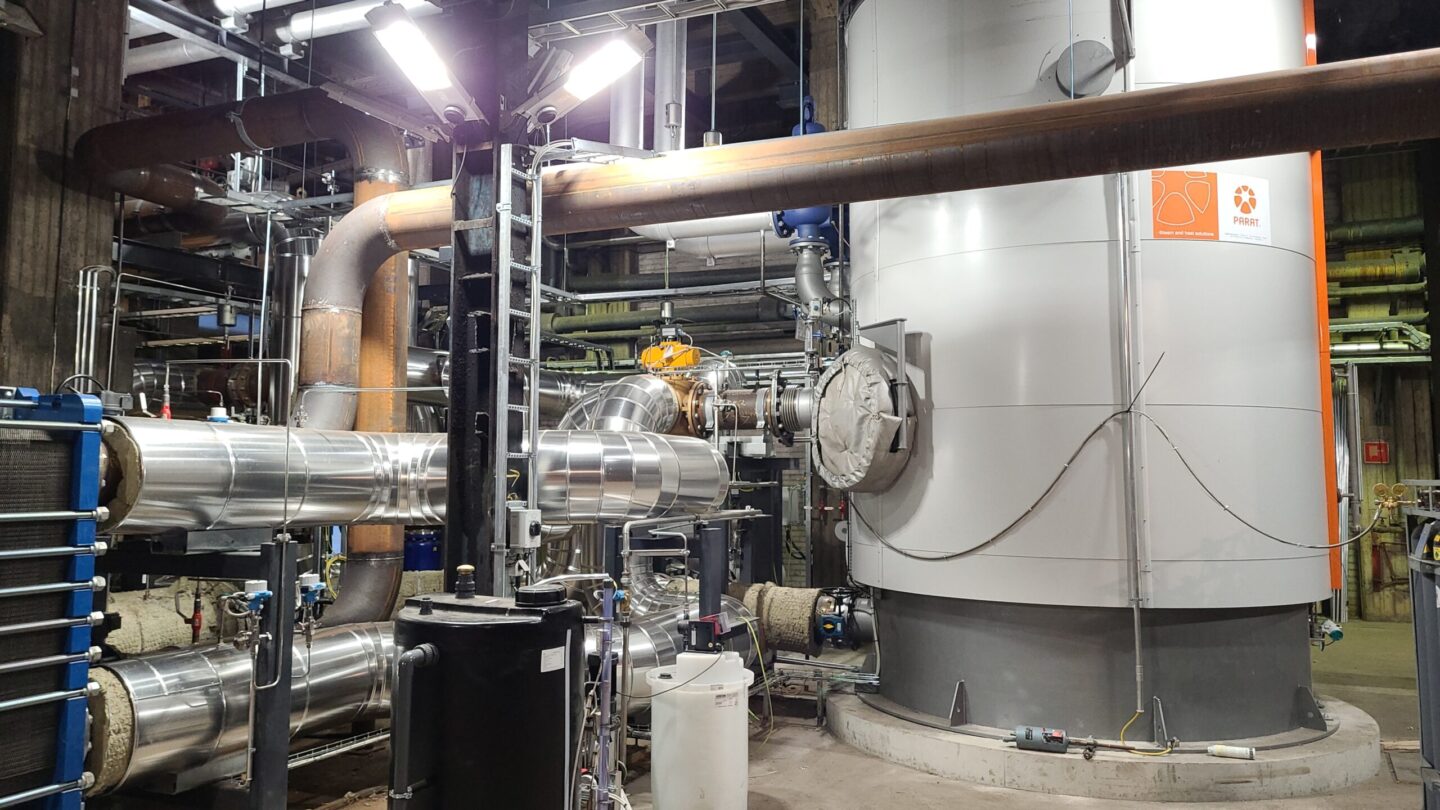The importance of thermal power became emphasised
In the context of the geopolitical situation and the challenges it poses to the energy environment, in 2022 EPV reshaped its strategy, putting increasing emphasis on the security of near-term energy supply and energy self-sufficiency. The situation also highlighted the important role of thermal power in the midst of the energy crisis and as part of EPV’s production portfolio.
“Thanks to previously implemented sector coupling and energy storage solutions – such as electric boilers and the Vaskiluoto thermal energy storage facility – EPV has been very successful in ensuring sufficient heat production, even though fuel imports from Russia stopped,” says Mats Söderlund, Vice President of EPV Heat business area.
Bioenergy flows from Russia to Finland and other countries in the Baltic Sea Region also stopped. This put a huge strain on the fuel market in the region, raising costs considerably.
“At the same time, fossil fuel prices rose sharply, even reaching a new price record for coal. EPV produced peat to support security of supply, but due to the rainy summer, high production volumes were not achieved, and the overall availability of domestic peat was limited.”
Despite the challenging energy situation, EPV Heat, like other companies in the Group, continued to implement the Group’s New Electricity Revolution Strategy. The crisis has not only underlined the importance of heat production, but also boosted ongoing projects and new investment decisions.
“We have set up a company called Powerheat Solutions, which offers customers sector coupling solutions and a new way to bring zero-emission capacity to heat generation. This is an excellent support for EPV’s strategy, which emphasises sector coupling and flexibility solutions, as well as the development of new business models,” Söderlund says.
Major business acquisitions
At the end of 2022, major business acquisitions were made in both Vaasa and Seinäjoki. Vaasan Voima, a wholly owned subsidiary of EPV, acquired Vaskiluodon Voima’s business operations, including the company’s entire production capacity. In the business transaction, 25 people joined the EPV Group under their current employment contracts.
“The transaction increased EPV’s balancing production capacity by around 90 megawatts,” says Söderlund.
In addition, Seinäjoen Voima acquired the district heat production capacity of Seinäjoen Energia as an asset acquisition. The transaction increased the boiler capacity of Seinäjoen Voima’s heat production capasity to approximately 330 MWf. The transaction involved no staff transfers.
In addition to the establishment of Powerheat Solutions, the Seinäjoki transaction supports EPV’s important strategic focus and its development of new business models and ensures continuity.
“As a result of the transaction, we have also decided to operate as a producer of wholesale heat whenever we are not engaged in electricity production in the region. This is a fundamental change, because until now our projects have generally been based on electricity generation.”
The Seinäjoki deal will enable EPV to better optimise its production and make more efficient use of, for example, fuel logistics chains and the procurement organisation.
Investment decisions in Vaskiluoto
At the Vaskiluoto power plant, a decision was made to invest in two new electric boilers in addition to the one already in operation. The new boilers will provide 120 MW of additional capacity for heat production. At the same time, an investment decision was also taken to expand the underground thermal energy storage (TES) facility by about 3 gigawatt hours (GWh).
“The Ministry of Economic Affairs and Employment of Finland granted almost EUR 1 million in energy efficiency aid for the TES expansion project,” says Söderlund.
The existing electric boiler in Vaskiluoto has been working flawlessly. It has been used flexibly and on market terms throughout the year.
In September, a turbine and generator failure occurred at the Vaskiluoto power plant. The plant was out of service for 2.5 months while bearing damage resulting from low oil pressure was repaired.
Seinäjoki electric boiler and district heating battery were commissioned
Seinäjoen Voima’s electric boiler and district heating battery project, which had received investment aid of around half a million euros from Finland’s Ministry of Economic Affairs and Employment, was completed in early autumn on the site of the Seinäjoki power plant. The new electric boiler and heat-battery were in use for the rest of the year and have worked as planned.
“The geopolitical situation, price pressures and the challenges in the availability of materials delayed the project by a few months. However, despite the difficult investment and inflationary environment, the project was executed with flying colours.”
The 40 MW electric boiler and the district heating battery with an energy storage capacity of 400 MWh will reduce CO2 emissions by up to 7,200 tonnes per year. They are an essential part of EPV’s balancing production capacity and will serve as excellent optimisation components when Seinäjoen Voima starts separate heat production.
Joint project between Tornion Voima and Outokumpu was completed
The joint project between Tornion Voima and Outokumpu was completed in early 2023. The project involved building a heat recovery system for the Outokumpu cold-rolling mill.
“The system recovers waste heat, which is used to heat the Outokumpu factory site and to supply district heating in the region. Such energy efficiency measures are important on the road to zero emissions.”
The implementation of the zero-emission production plan for Tornion Voima, compiled in 2021, made good progress during 2022: the company made an investment decision to purchase a 40 MW electric boiler, which will enable even more flexible production.
Fuel availability decreased slightly in Raahe
The main fuels used by Raahen Voima are coke oven gas and blast furnace gas from SSAB’s iron production. As SSAB’s second blast furnace was out of operation for part of the year, fuel availability decreased somewhat. In addition, the LNG terminal at the plant site had a high utilisation rate, which meant that the missing blast furnace gas and coke oven gas could not be replaced by natural gas.
In 2021, winding damage was detected in the generator of the Raahen Voima power plant, and it was repaired in summer 2022. For this reason, the generator was disconnected from the grid for about a month during the summer, during which time the winding was modelled for later rewinding.
Investing in thinning capasity
Competition in the fuel market was fierce throughout the year for geopolitical reasons. Market pressure also increased with the availability of by-products. The mechanical wood-processing industry was buoyant in the early part of the year and by-products such as sawdust were readily available. Towards the end of the year, however, the situation changed: the sawmill industry weakened and by-product flows decreased.
As circumstances changed, EPM Metsä refined its procurement strategy.
“We have compensated for the declining flow of by-products by investing in thinning chains consisting of a harvester and a forwarder. This means a stronger focus on young forest management and thinning,” Söderlund explains.
EPV Energy’s power procurement 2017-2022
Total heat production of Vaasan Voima, Tornion Voima and Seinäjoen Voima 2017-2022
Electricity production of Tornion Voima and Raahen Voima 2017-2022


